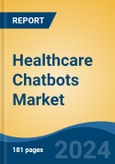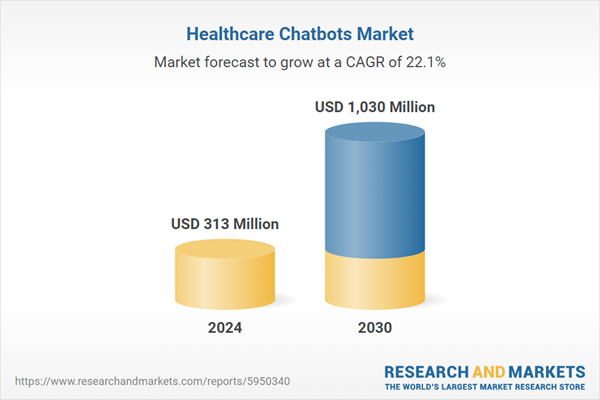Cloud is the fastest growing segment, North America is the largest regional market
Speak directly to the analyst to clarify any post sales queries you may have.
10% Free customizationThis report comes with 10% free customization, enabling you to add data that meets your specific business needs.
Key Market Drivers
The rising demand for virtual healthcare services significantly propels the global healthcare chatbots market, as patients increasingly seek convenient and accessible care solutions. Chatbots serve as a primary interface for immediate information, appointment scheduling, and preliminary medical guidance, optimizing patient flow and extending service availability beyond traditional hours. This demand is further underscored by widespread organizational investment in digital health infrastructure. According to Teladoc Health, in 2024, 71% of organizations currently offering telehealth plan to expand their programs, reflecting a 9% increase from the previous year. This substantial expansion directly drives the need for advanced conversational agents to manage increased virtual interactions and enhance overall service delivery.Key Market Challenges
A significant challenging factor impeding the expansion of the Global Healthcare Chatbots Market involves concerns surrounding data privacy and patient confidentiality. This issue directly hampers market growth by eroding trust among both patients and healthcare providers, which is essential for the widespread adoption of AI-powered solutions. The sensitive nature of health information makes any perceived risk of compromise a major deterrent to engaging with digital platforms like chatbots.Key Market Trends
The Global Healthcare Chatbots Market is significantly influenced by the expansion of clinical decision support capabilities, moving beyond basic information retrieval to more analytical assistance. This trend emphasizes the development of chatbots that can interpret complex medical data, offer diagnostic guidance, and suggest treatment protocols, thereby augmenting the capabilities of healthcare professionals. According to a Fierce Healthcare and Sermo poll published in October 2024, 76% of surveyed physicians reported utilizing general-purpose large language models for clinical decision-making, with over half specifically employing them for diagnosis support. This highlights a clear shift towards reliance on AI for deeper clinical insights.Key Market Players Profiled:
- Nuance Communications, Inc.
- Infermedica Sp. z o.o.
- Sensely Inc.
- Babylon Health Services Ltd.
- HealthTap, Inc.
- Buoy Health, Inc.
- Ada Health GmbH
- PACT Care BV
- Woebot Health.
Report Scope:
In this report, the Global Healthcare Chatbots Market has been segmented into the following categories:By Component:
- Solutions
- Services
By Deployment:
- On Premises
- Cloud
By Application:
- Symptom Checking
- Medication Assistance & Guidance
- Appointment Scheduling
- Coverage & Claims Management
- Others
By Type:
- Prescriptive Chatbots
- Conversational Chatbots
- Informative Chatbots
- Others
By Region:
- North America
- Europe
- Asia-Pacific
- South America
- Middle East & Africa
Competitive Landscape
Company Profiles: Detailed analysis of the major companies present in the Global Healthcare Chatbots Market.Available Customizations:
With the given market data, the publisher offers customizations according to a company's specific needs. The following customization options are available for the report.Company Information
- Detailed analysis and profiling of additional market players (up to five).
This product will be delivered within 1-3 business days.
Table of Contents
Companies Mentioned
The companies profiled in this Healthcare Chatbots market report include:- Nuance Communications, Inc.
- Infermedica Sp. z o.o.
- Sensely Inc.
- Babylon Health Services Ltd.
- HealthTap, Inc.
- Buoy Health, Inc.
- Ada Health GmbH
- PACT Care BV
- Woebot Health.
Table Information
| Report Attribute | Details |
|---|---|
| No. of Pages | 181 |
| Published | November 2025 |
| Forecast Period | 2024 - 2030 |
| Estimated Market Value ( USD | $ 313 Million |
| Forecasted Market Value ( USD | $ 1030 Million |
| Compound Annual Growth Rate | 22.1% |
| Regions Covered | Global |
| No. of Companies Mentioned | 10 |









